El Teide florecido. Curiosidades de Tenerife #5 / The flowered Teide. Curiosities of Tenerife #5.
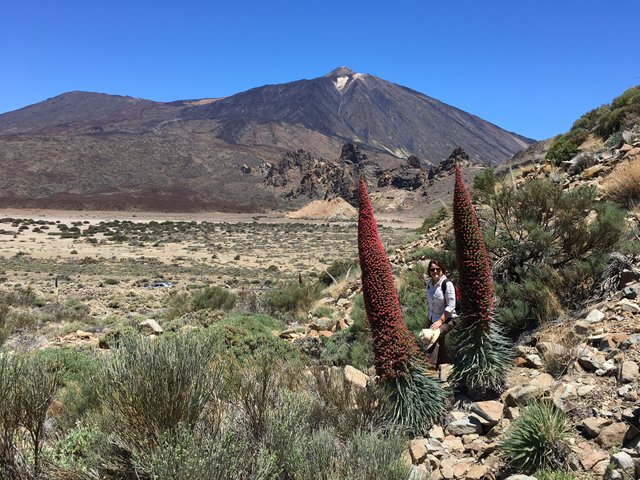
Sólo a finales de mayo se produce un estallido de color y vida en la planicie junto al volcán del Teide. Casi todos los años, me encanta reservar un día para asistir a este gran espectáculo.
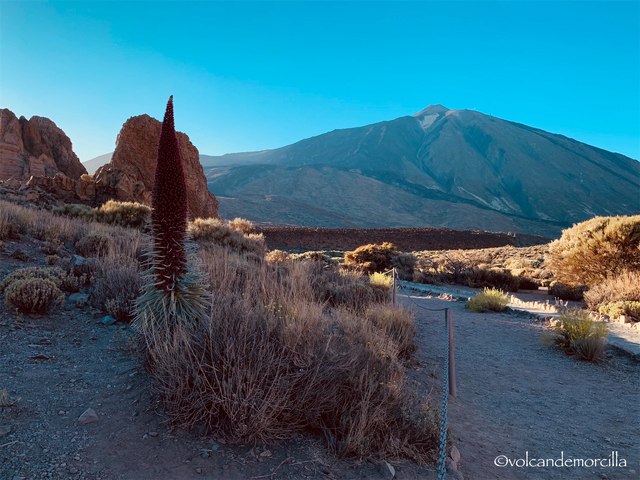
Durante todo el año, el paisaje es árido y desértico a 3000 metros de altura. Las condiciones ambientales no permiten que se desarrolle nada mas que una vegetación resistente y austera.
Sin embargo, año tras año, la naturaleza espera su momento y florece, aunque solo lo hace durante tres semanas.
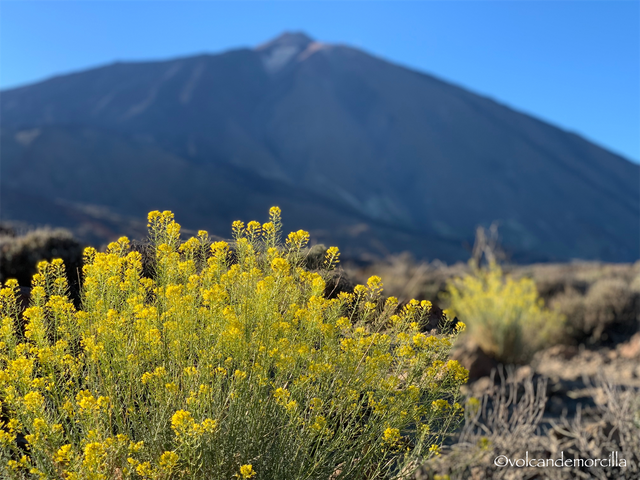
Las Islas Canarias se formaron hace miles de millones de años por sucesivas erupciones volcánicas. El archipiélago, compuesto por ocho islas, se encuentra situado en el océano Atlántico frente a las costas africanas. La isla de Tenerife no es la mas grande, pero si es la mas alta por que en ella reside el Teide que, con sus 3718 metros constituye el tercer volcán mas alto del mundo.
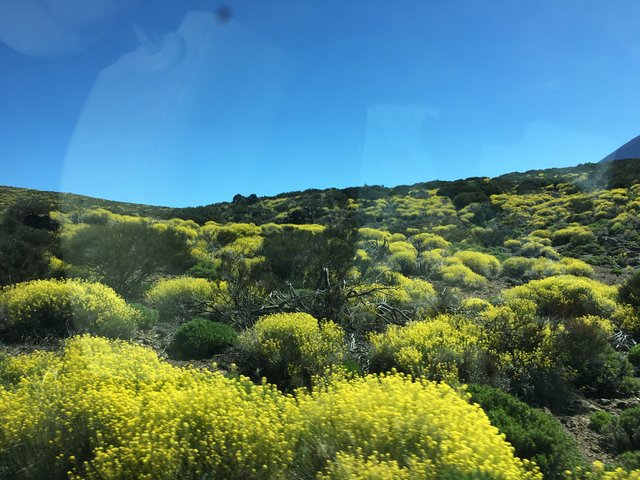
Junto al Teide, en los últimos días de mayo y primeros de junio, todo se llena de color. La intensa floración produce un elevado contraste con la aridez de las rocas volcánica.
Por eso, la primavera es uno de los mejores momentos para visitar el Parque Nacional del Teide porque es cuando se produce la floración de todas las plantas a la vez y sólo durante unas pocas semanas.
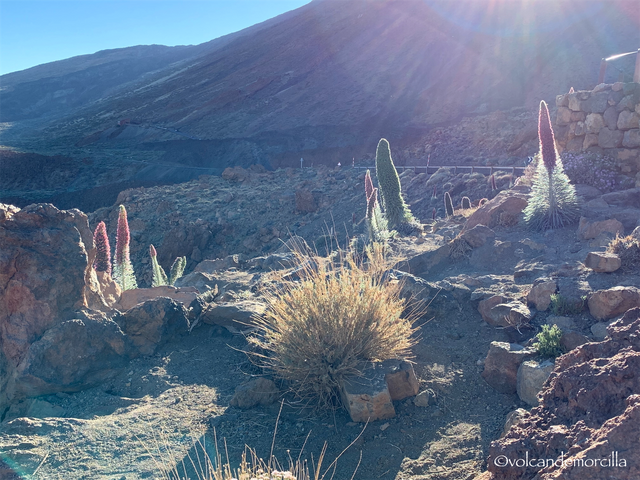
Subir al Teide, para ser espectador de este prodigio natural, es siempre una lotería porque puede que llegues demasiado pronto y todavía no haya sido el máximo esplendor o tal vez asistas demasiado tarde y las flores se hayan secado ya.
Las condiciones climatológicas a miles de metros de altura son duras. Ni los pinos son capaces de sobrevivir en este entorno. Las temperaturas pueden bajar mucho por la noche y elevarse bastante durante el día. Hay mucha sequedad ambiental y un alto grado de radiación solar. El paisaje es como un desierto.
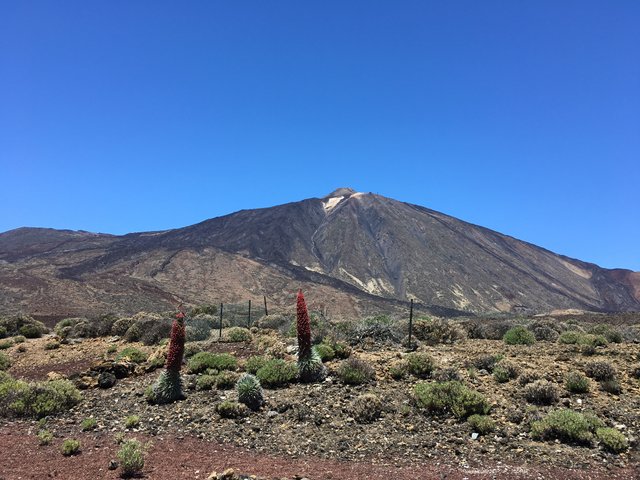
La vegetación en estas condiciones de altura consiste fundamentalmente en arbustos que forman semiesferas para protegerse de la deshidratación e insolación.
En este entorno natural, hay un seleccionado grupo de plantas. Muchas de ellas son especies endémicas que sólo lo se producen junto al Teide.
He tomado algunas fotografías para poder mostraros las mas frecuentes. Hay algunas más pero son más difíciles de encontrar. Por ejemplo, por su rareza, no he podido descubrir la “Violeta del Teide”.
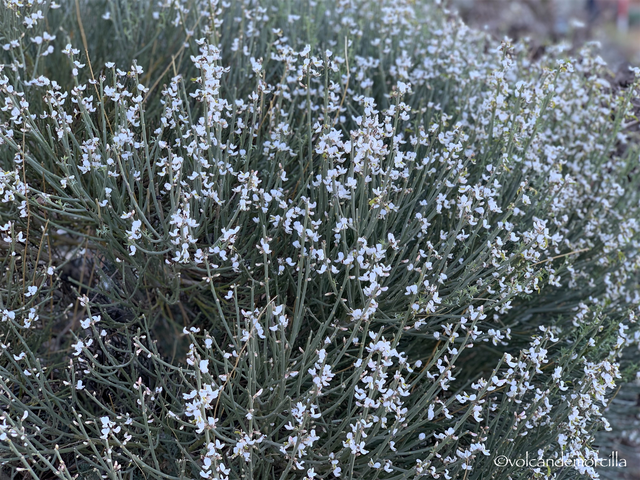
La “Retama” es un arbusto grande y vigoroso que produce pequeñas ramas de flores blancas. La planta puede alcanzar una altura de unos 2 metros. Al estar en flor, la retama se observa como una semiesfera blanca en contraste con la lava negra, parecen bolas de nieve.
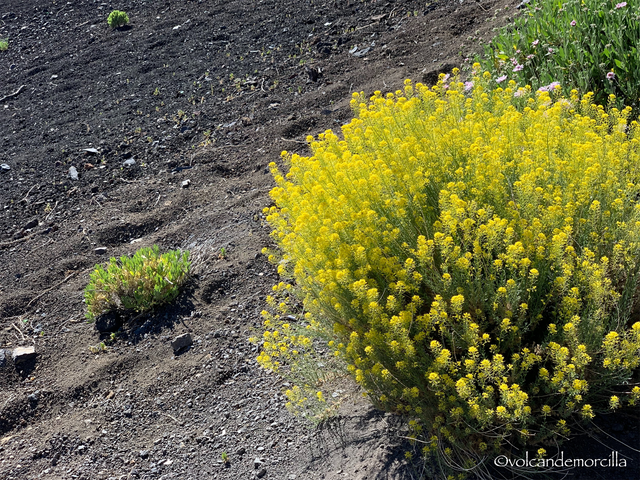
La “Hierba pajonera” es una de las plantas más abundantes del Teide. Su aspecto normal no llama mucho la atención y destaca muy poco. Durante todo el año parece una hierba seca.
Pero, sin embargo, en primavera se cubre toda con unas flores amarillo limón muy bonitas.
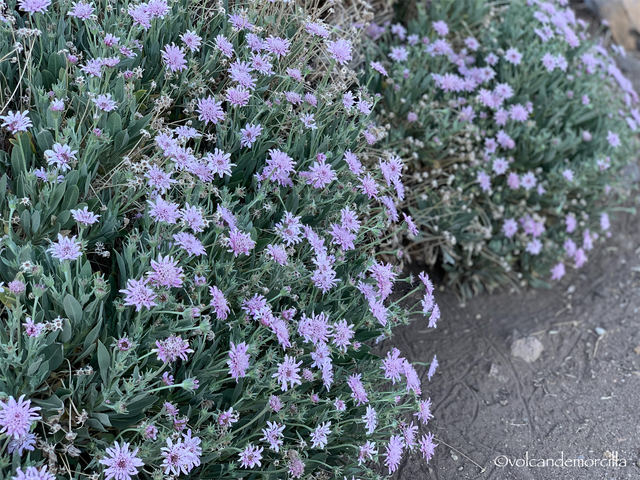
La “Hierba conejera” también llamada “Rosalillo de la cumbre”, parecen margaritas de color blanco rosáceo muy pálido aunque los pétalos son muy irregulares. Estas plantas florecen algo más tarde que las otras.
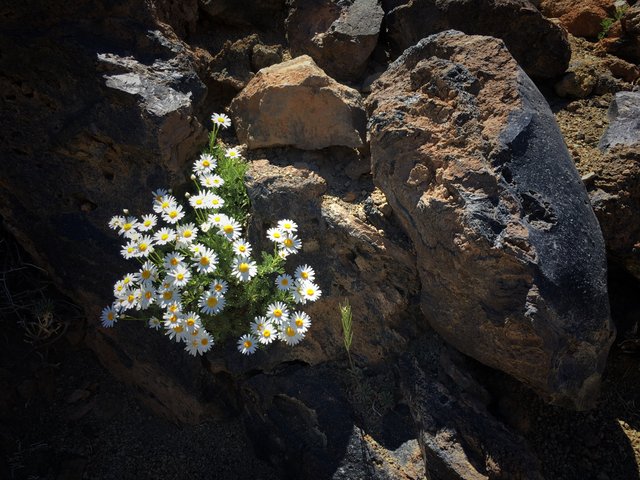
La “Margarita del Teide”, cuando está florecida es totalmente espectacular. Forma unas semiesferas de pequeñas margaritas apretadas, una juntado a otras. Es una especie totalmente endémica que sólo se da en este entorno natural del Teide.
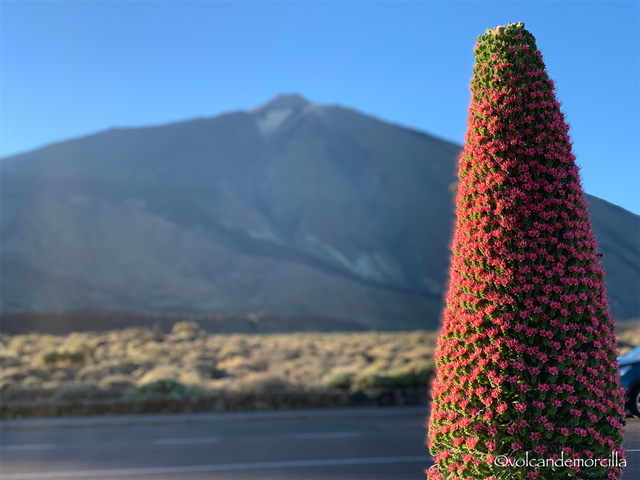
El “Tajinaste rojo” (Echium wildpretii) es la planta mas impresionante que hay en el Teide. Es muy espectacular y es una planta endémica única. Es el símbolo del Parque Nacional del Teide. Por su rareza, es una especie protegida. También se da en la isla de La Palma.
Éstos dos últimos años he observado una disminución bastante importante del número y tamaño de los Tajinastes aunque, me dicen, que la floración depende bastante de las condiciones climatológicas que hayan sucedido durante el año. Tal vez, sea solo una impresión personal.
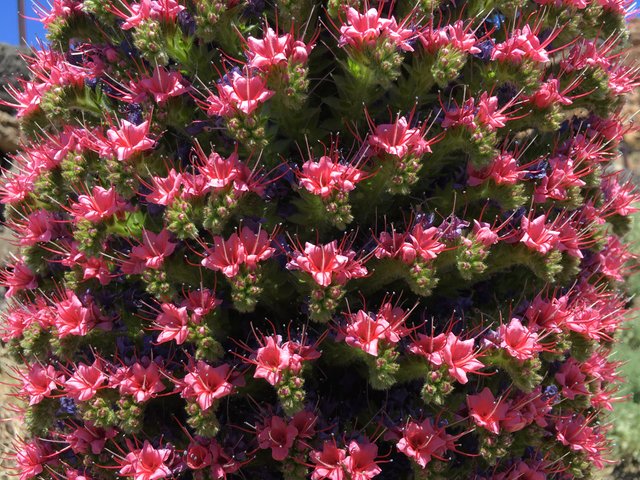
El Tajinaste florece cada dos años y forma una densa formación tubular que asciende como un cono o capirote. Tiene la forma de un cuerno gigante que puede llegar a alcanzar 3 metros de altura.
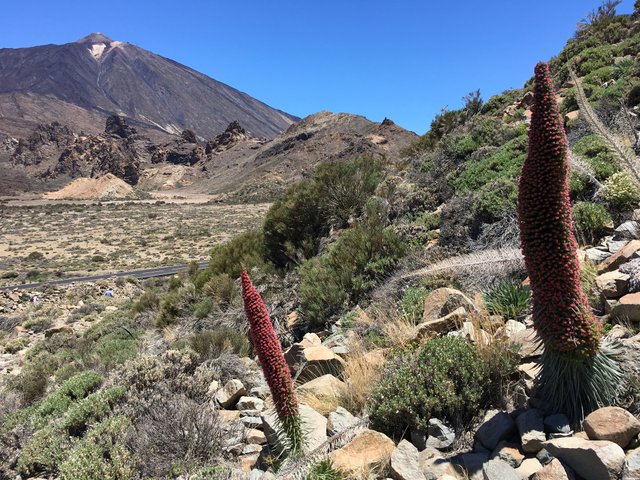
Las florecillas son de color rojo y fucsia pero, cuando envejecen el Tajinaste queda de un color azul. Las pequeñas flores forman líneas que ascienden apretadas en forma de espiral.
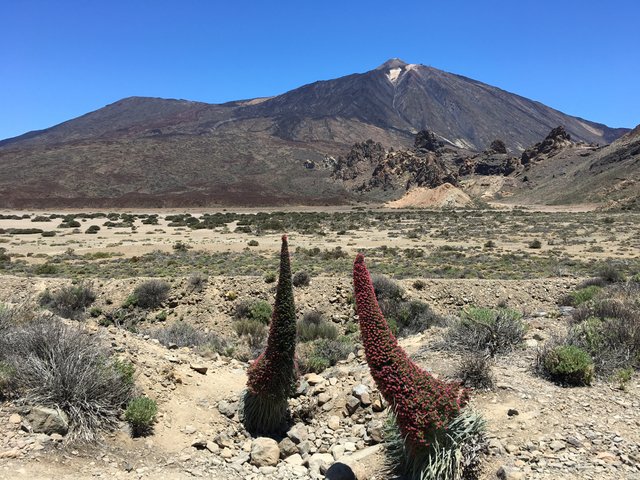
Cuando termina la floración, los Tajinastes se secan y la flor queda como un mástil de ramas blancas y sin flores. Siempre se vea alguno de años anteriores que todavía permanece erguido. Un triste recuerdo de su grandeza anterior.
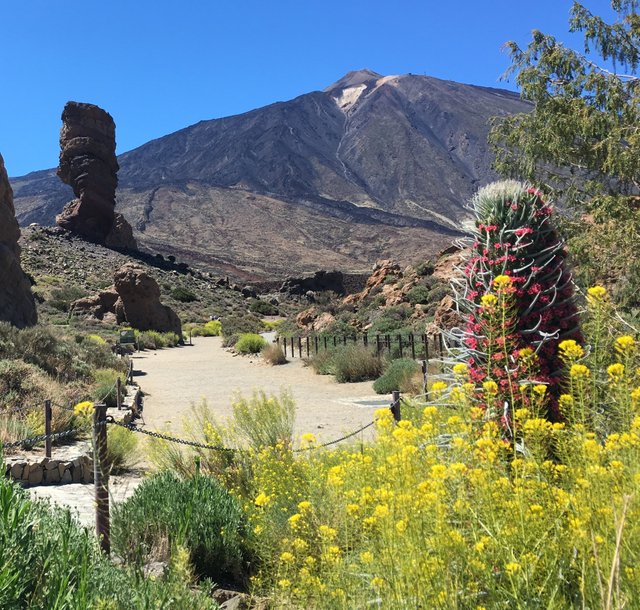
En el Parque Nacional, cómo hay tantas flores a la vez, hay muchas abejas y de ellas se obtiene una miel muy rica, la famosa y demandada miel del Teide. Está muy rica y tiene un sabor distinto puesto que es obtenida de estas raras plantas en floración.
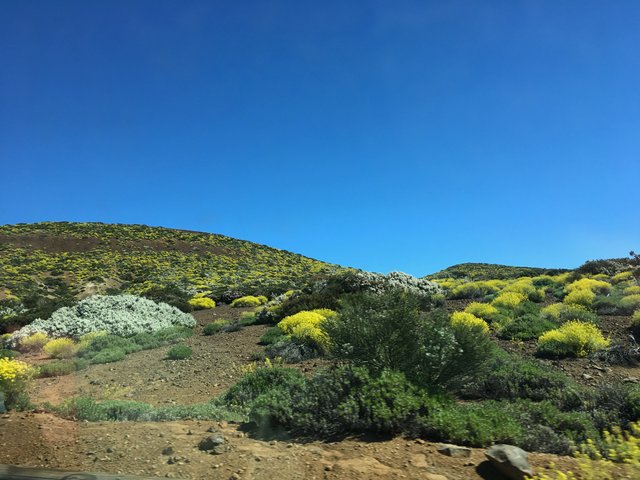
Así que ya sabéis, si tenéis la ocasión de pasar por las Islas Canarias, no perdáis la oportunidad de viajar a Tenerife en primavera a finales de mayo.
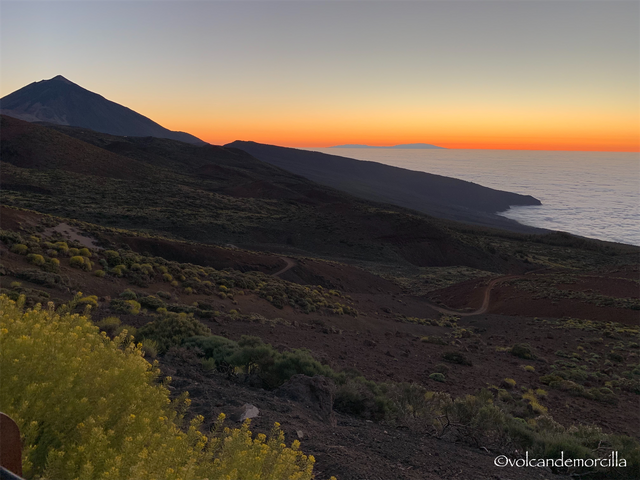
##
Only at the end of May there is a burst of color and life in the plain next to the Teide volcano. Almost every year, I love booking a day to attend this great show.
Throughout the year, the landscape is arid and desert at 3000 meters high. The environmental conditions do not allow anything more than a resistant and austere vegetation to develop.
However, year after year, nature waits for its moment and only for three weeks everything blooms.
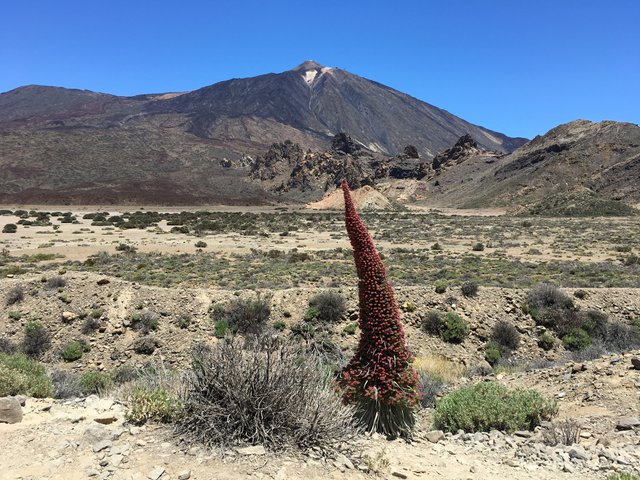
The Canary Islands were formed billions of years ago by successive volcanic eruptions. The archipelago, composed of eight islands, is located in the Atlantic Ocean off the African coast. The island of Tenerife is not the largest, but it is the highest because it is home to the Teide which, with its 3718 meters, is the third highest volcano in the world.
Next to Teide, in the last days of May and early June, everything fills with color. The intense flowering produces a high contrast with the aridity of the volcanic rocks.
That is why spring is one of the best times to visit the Teide National Park because it is when all the plants bloom at the same time and only for a few weeks.
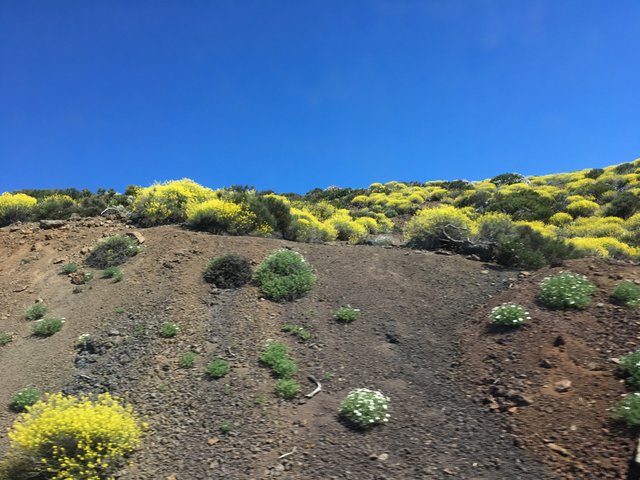
Climbing Mount Teide, to be a spectator of this natural prodigy, is always a lottery because you may arrive too early and it has not yet been the maximum splendor or you may attend too late and the flowers have already dried up.
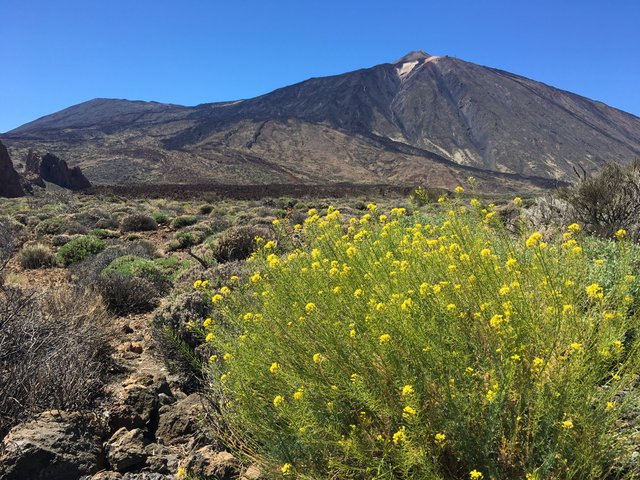
The weather conditions at thousands of meters of height are hard. Neither pine trees are able to survive in this environment. Temperatures can go down a lot at night and rise a lot during the day. There is a lot of environmental dryness and a high degree of solar radiation. The landscape is like a desert.
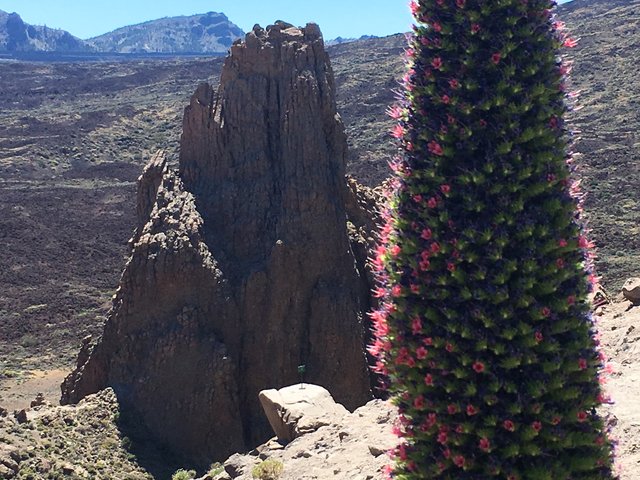
The vegetation in these conditions of height consists mainly of shrubs that form hemispheres to protect themselves from dehydration and insolation.
In this natural environment, there is a selected group of plants. Many of them are endemic species that only occur next to the Teide.
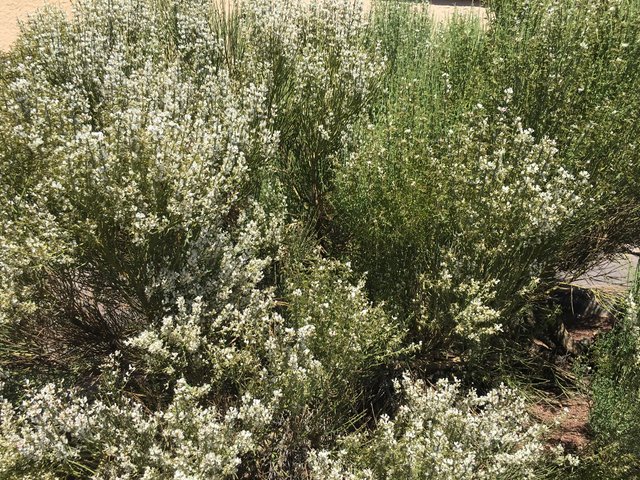
I have taken some pictures to show you the most frequent ones. There are some more but they are harder to find. For example, due to its rarity, I have not been able to discover the "Violeta del Teide".
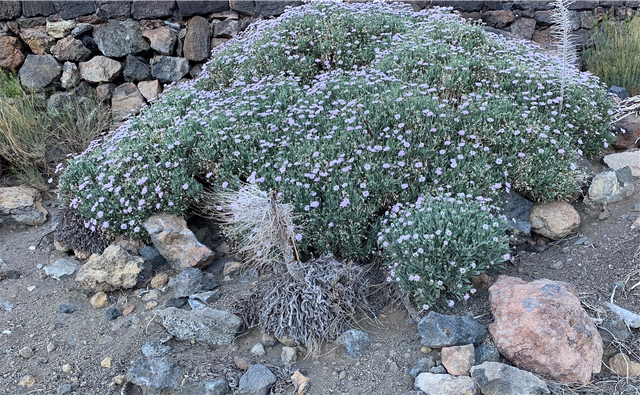
The "Retama" is a large and vigorous shrub that produces small branches of white flowers. The plant can reach a height of about 2 meters. When in flower, the broom is observed as a white hemisphere in contrast to black lava, they look like snowballs.
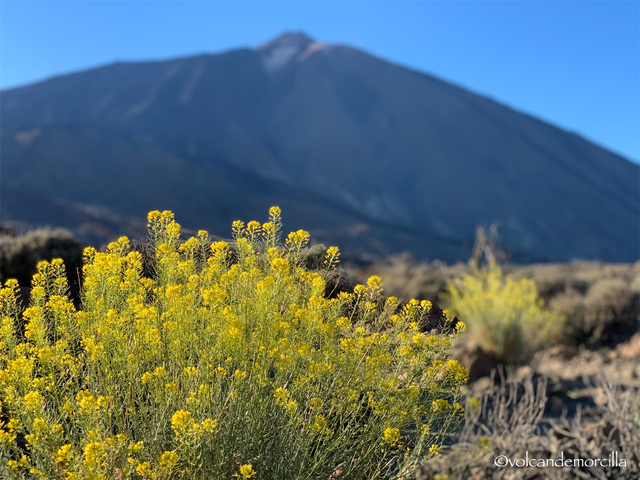
The "Pajonera grass" is one of the most abundant plants of Teide. Its normal appearance does not attract much attention and highlights very little. Throughout the year it looks like a dry herb. But, nevertheless, in spring it is covered with some beautiful yellow lemon flowers.
The "rabbit grass" also called "Rosalillo de la Cumbre", look like very pale pinkish white daisies although the petals are very irregular. These plants bloom a little later than the others.
The "Margarita del Teide", when it is flowered is totally spectacular. It forms hemispheres of small tight daisies, one joined to others. It is a totally endemic species that only occurs in this natural environment of Teide.

The "Red Tajinaste" (Echium wildpretii) is the most impressive plant in the Teide. It is very spectacular and is a unique endemic plant. It is the symbol of the Teide National Park. Due to its rarity, it is a protected species. It also occurs on the island of La Palma.
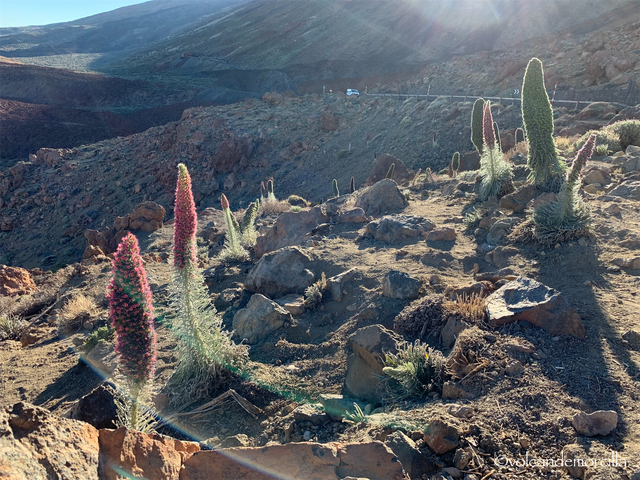
These last two years I have observed a quite important decrease in the number and size of the Tajinastes, although, I am told, the flowering depends a lot on the weather conditions that have happened during the year. Maybe, it's just a personal impression.
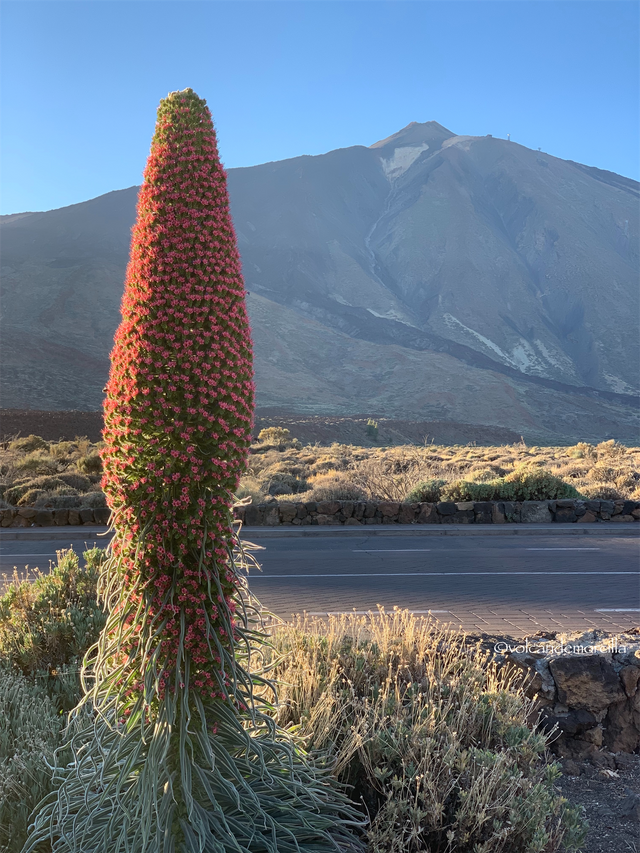
The Tajinaste blooms every two years and forms a dense tubular formation that rises like a cone or capirote. It has the shape of a giant horn that can reach 3 meters in height.
The florets are red and fuchsia but, when they age the Tajinaste is a blue color.
The florets form ascending lines tight in a spiral.
When the flowering finishes, the Tajinastes dry and the flower remains like a mast of white branches and without flowers. Always see one of previous years that still stands erect. A sad reminder of his previous greatness.
In the National Park, how there are so many flowers at once, there are many bees and from them you get a very rich honey, the famous and demanded Teide honey. It is very rich and has a different flavor since it is obtained from these rare flowering plants.
So you know, if you have the opportunity to go through the Canary Islands, do not miss the opportunity to travel to Tenerife in spring at the end of May.

Curiosidades de Tenerife/Curiosities of Tenerife.
Vivo en Tenerife y me resulta muy grato mostraros esta maravillosa isla. Con esta serie de publicaciones que titulo “Curiosidades de Tenerife” pienso que os puedo aportar información de primera mano que no sólo os ayude a conocer la isla sino que, tal vez, os ayude a preparar un viaje futuro. Mi interés reside en que el artículo os resulte entretenido y disfrutéis con las fotografías. Espero conseguirlo.
I live in Tenerife and I am very happy to show you this wonderful island. With this series of publications entitled "Curiosidades de Tenerife" I think I can provide you with first-hand information that not only helps you get to know the island but, perhaps, helps you prepare a future trip. My interest is that the article is entertaining and enjoy the photographs. I hope to get it.
Hasta ahora he publicado las siguientes “curiosidades” de Tenerife. Aquí os dejo los enlaces:
So far I have published the following "curiosities" of Tenerife. Here you have the links:
1. Cruces de Mayo/ May Crosses
3. Mariposario/Butterfly Garden

Cómo lo hago
Hice las fotografías con mi iPhone X. Para la edición utilicé la aplicación Snapseed y para la firma digital usé la App Watermark.
Los dibujos los hice en el iPad con el programa Sketches.
For the photography I use my iPhone X. For edition I use the Snapseed application and for the digital signature the Watermark app.
Everything I did on my mobile phone, I did not use the computer at all.
For the drawings, I use the Sketches program and paint them on the tablet.
Si quieres ver como lo hago, visualiza estos tres enlaces de publicaciones previas.
If you want to see how I do it, visualize these three links from previous publications.


Original design for @talentclub de @carlos-cabeza
Las fotos son mías y originales. También, soy el autor del dibujo separador.
¡Espero tus comentarios!
The photos are originals and mine. Also, I am the author of the separator drawing.
I await your comments.
¡Buen Camino!
¡Muy motivador y enriquecedora tu experiencia! Provoca estar allí. Ya tengo un lugar por visitar en Tenerife si estoy en verano y en el momento indicado. Es impresionante el contraste de colores. ¡Gracias por compartir! Saludos y todo lo bueno.
Posted using Partiko Android
Tenerife es bonito en cualquier época del año. La temporada alta, la mas cara es entre octubre y abril porque hace buen tiempo mientras que en Europa hace mucho frío.
Un saludo
Posted using Partiko iOS
Se queda uno sin palabras ante el espectáculo que traes, el volcán es imponente, las pequeñas flores dan un toque de alegría, algo muy delicado; el Tajinaste, jamás había visto algo tan bonito, es como una mazorca roja...cielo azul y tu narrativa, mejor dicho, todo está en su punto exacto.
Bellas fotos, ya entiendo porque te gusta visitar tan único lugar.
Mazorca gigante es una buenísima definición. Exacto!!
Por otro lado, Jejejej Vamos avanzando... 🤗
Ya entiendes la primera parte de mi nombre...
Cuánta explosión de vida, preciosas fotografías.
Espero te encuentres bien, un abrazo!
Me alegra saber de ti. Espero que pronto mejoren tus condiciones, Un abrazo fuerte 🤗
Posted using Partiko iOS
Como complemento, el año pasado hice un artículo sobre los Tajinastes del Teide. Aquí os dejo el enlace.
https://steemit.com/spanish/@volcandemorcilla/los-tajinastes-del-teide
Posted using Partiko iOS
Amigo, si te cuento... he pasado una y otra vez por este post y las imágenes no me abren, estoy súper extrañada, solo me pasa con esta publicación. Me mata la ansiedad jejeje, quiero llorar.
Jo! Qué pena.
A mi me abren bien. No se que pasará. Serán muchas fotografías?
Espero que se te arregle.
Y con este enlace te pasa también? :
https://steemit.com/spanish/@volcandemorcilla/los-tajinastes-del-teide
Ohhh! Que bellezaaa, pues fíjate que lo vi perfectamente. Un paisaje hermosísimo. Ahora me es más extraño aún que no logre ver este post. Intentaré mañana de nuevo. Es muy pero muy raro y no creo que sea la cantidad de fotos, seguro regreso y te cuento.
Muchas Gracias amigos 🤗
Guao... Genial! @volcandemorcilla nos muestra un volcán de flores! Siempre he tenido entre mis sueños de viajero los alucinantes paisajes de las Islas Canarias, tierra de mi abuelo, don Emilio González... Pero debo confesar que tus fotos me sorprendieron y me mostraron una cara para mí desconocida de las bellas islas...
Desde Tenerife hubo una gran emigración hacia Venezuela. Fue tanta que hasta el acento se parece. Un saludo 😊
Posted using Partiko iOS